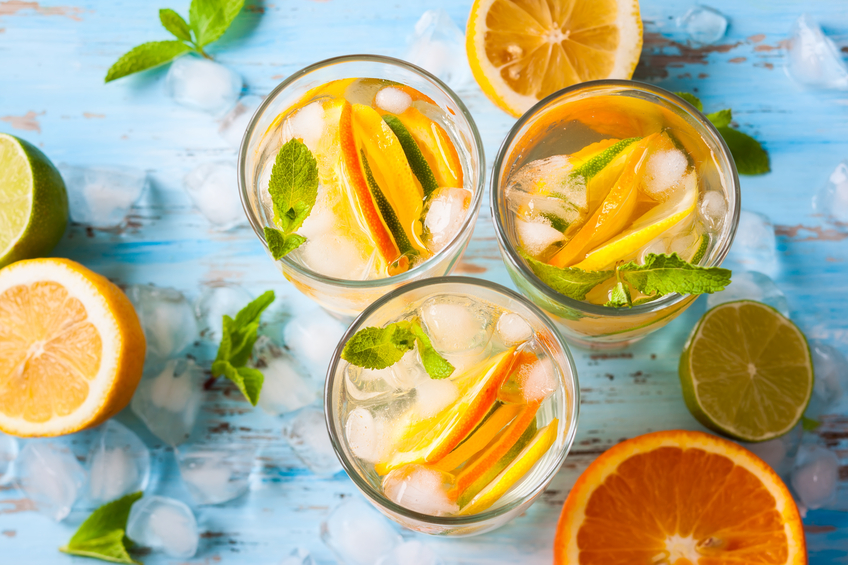When is “comfort food” not a food?
When it’s a drink.
What is it about a nice cup of tea on a dreary afternoon? Hot coffee on a cold morning? Lemonade, iced tea, or cold beer in summer?
Many of our routines and sources of comfort include our favorite beverages. Celebrations – both major and minor – are marked with beverages, too: champagne for a wedding or accomplishment, hot cocoa on a cozy snowy day. Even times of trouble are often eased with a friend’s offer of tea, coffee, or something stronger. Of course, certain countries are known for certain signature drinks, but wherever you travel you are likely to find a variety of thirst-quenchers.
Here is a peek at a few countries’ beverage preferences:
Australia
People talking in the cafe while having some fresh coffee
Australians are very fond of coffee and tea. Many drink one or the other for breakfast and as a break in the late afternoon. Shops offering prepared drinks and gourmet beans are found throughout the cities.
Juice bars are common in the cities and offer a refreshing array of freshly-squeezed juices.
Australian beer is excellent. Each region produces its own and many varieties are available nationwide. There are differing strengths of alcohol content. Australian beer is consumed chilled.
Australia is a prestigious wine-producing country and its superior, award-winning wines have received worldwide recognition.
Finland
Finns produce excellent vodka and beer, and they also make interesting liqueurs. A popular alcohol is Koskenkorva, which is distilled like vodka but is called viina locally.
There are many varieties of local beer. Some, depending on alcohol content, can be purchased in supermarkets, but many kinds can be purchased only in restaurants and bars or from the state liquor stores, known as Alko. Wines and liquors can be purchased only in Alkostores or in restaurants and bars.
There are also a number of berry liqueurs that are served ice-cold as accompaniment to meals. Two of the most popular are mesimarja, made of Arctic bramble, and lakka, made of cloudberries.
Coffee is widely consumed in Finland and is an important part of most social occasions, including the sauna. It is usually offered with pastries.
Morocco
Tea with mint in the Arab style on wooden table.Toned image. Selective focus.
Orange, almond, banana, and apple juices are widely available. Leben (yogurt and water) is refreshing and a good cure for stomach ailments. Halib luz is an expensive drink made of almonds and milk. Judor is a lemonade drink, which is not so sweet. Mineral water is usually ordered by brand name: Oulmès, Sidi Ali, or Sidi Harazem.
A heavily sweetened mint tea, atay is the national drink. Typically enjoyed after meals, it is served with ceremony and always the same way. Green tea is put in the teapot, called Berrad. A little bit of boiling water is poured into the pot and then emptied. Mint and sugar are added with more boiling water. That mixture is boiled again over low heat. When it is ready, it is then poured into a glass and again back into the pot. A little bit of tea is poured into the same glass, then swirled before being tasted. If it is not deemed to be sweet enough, more sugar is added.
When it is poured for the final time it is poured from a raised pot so that it forms a ring of bubbles, called a fez, or rezza, depending on the region.
South Korea
Nagano, Japan – March 9, 2013: Several different types of Japanese sake lined-up.
Korea produces top-notch beer. OB (Oriental Brewery) and Hite-Jinroare the most popular brands. Rice wine and rice liquor are traditionally made and are known as Makkoli. A popular distilled liquor is called soju.
Many provincial wines and liquors are produced locally, such as Majuang, a Riesling. Fine European wines are also available. It is customary for the host to pour the wine; one never fills one’s own glass. The Korean custom for accepting a drink, after declining at least once, is to hold the glass up with the right hand, while supporting it lightly with your left. A customary toast is Wihayeo, which literally means “dry glass.”
Barley tea is served with most meals.
************************************************
This information is excerpted from articles in Living Abroad’s International Relocation Center. Subscribe to the above destinations – or any of our 190+ reports – for full explanations on drinks, food, and all sorts of interesting cultural and business topics.
Written by Ellen Harris, GMS, International Product Director, Living Abroad





